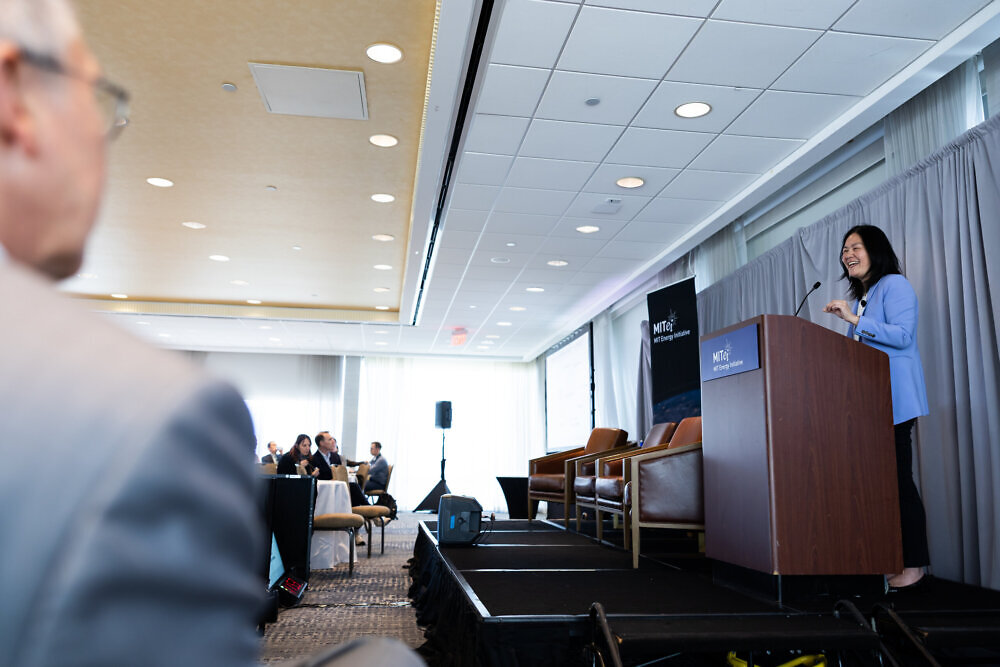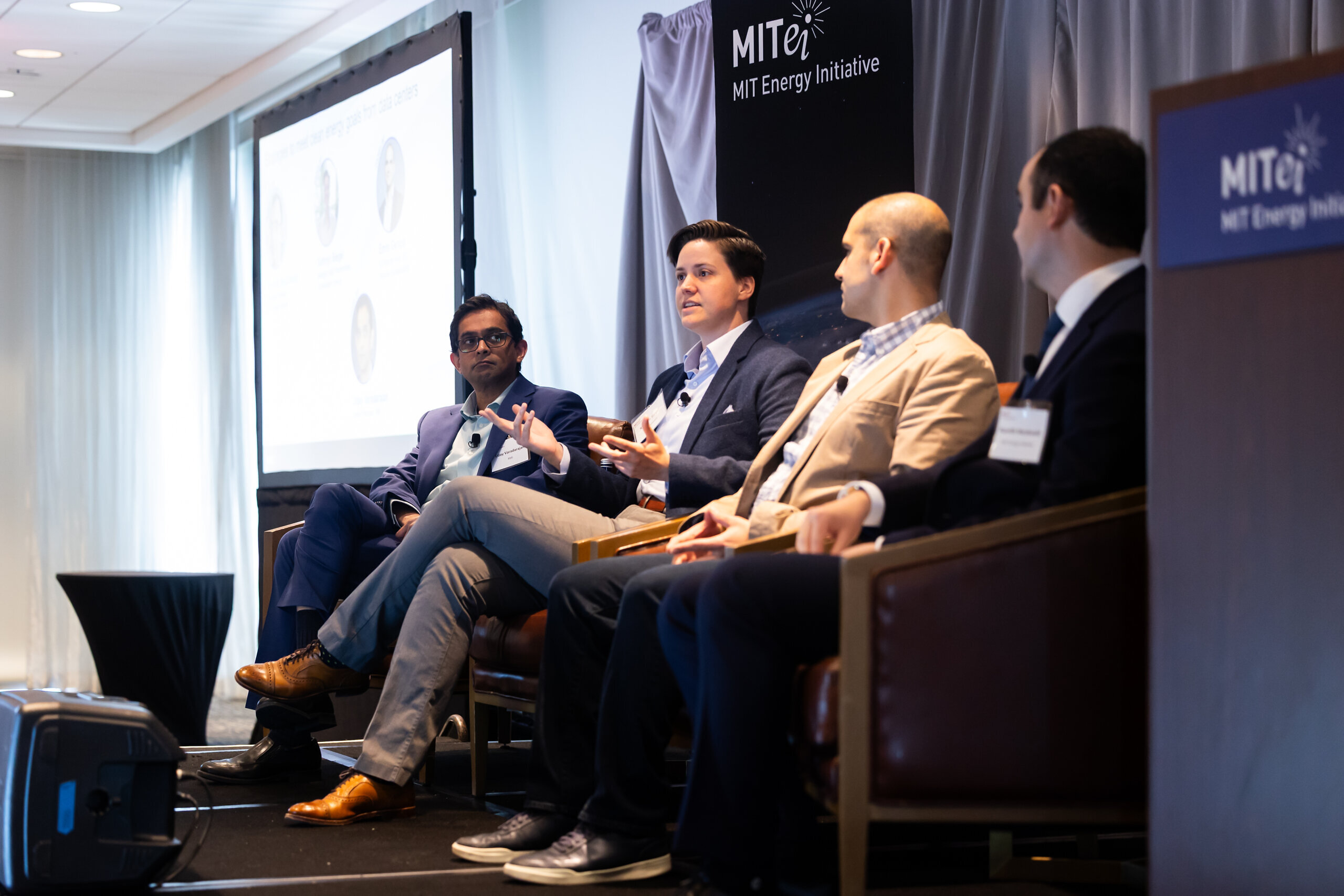
Jake Belcher
The eruptive development of AI-powered computing centers is developing an unmatched surge in power need that intimidates to bewilder power grids and derail climate objectives. At the same time, expert system innovations can transform energy systems, accelerating the transition to tidy power.
“We’re at a cusp of potentially gigantic adjustment throughout the economic situation,” stated William H. Environment-friendly, supervisor of the MIT Energy Effort (MITEI) and Hoyt C. Hottel Professor in the MIT Department of Chemical Engineering, at MITEI’s Springtime Symposium, “AI and power: Danger and assurance,” hung on May 13, 2025 The event brought together professionals from sector, academia, and government to discover solutions to what Environment-friendly called both “neighborhood problems with electric supply and meeting our clean power targets” while seeking to “profit of AI without some of the damages.” The obstacle of data facility energy need and prospective benefits of AI to the power shift is a research study priority for MITEI.
AI’s shocking energy demands
From the start, the seminar highlighted sobering data concerning AI’s appetite for electrical energy. After years of level power demand in the USA, calculating facilities now consume roughly 4 percent of the country’s electrical energy. Although there is terrific uncertainty, some estimates suggest this demand could rise to 12 – 15 % by 2030, mainly driven by expert system applications.
Vijay Gadepally, senior researcher at MIT’s Lincoln Laboratory, emphasized the range of AI’s usage: “The power needed for maintaining several of these large models is increasing virtually every three months,” he kept in mind. “A solitary ChatGPT discussion uses as much electrical power as charging your phone, and generating an image takes in concerning a bottle of water for air conditioning.”
Facilities requiring 50 to 100 megawatts of power are emerging rapidly across the United States and internationally, driven both by laid-back and institutional study requires depending on huge language programs such as ChatGPT and Gemini. Gadepally cited congressional statement by Sam Altman, Chief Executive Officer of OpenAI, highlighting exactly how essential this partnership has actually become: “the cost of intelligence, the expense of AI, will certainly converge to the cost of energy.”
“The power demands of AI are a substantial difficulty, however we likewise have a chance to harness these huge computational capacities to add to environment adjustment options,” stated Evelyn Wang, MIT Vice President for Energy and Climate, and the previous director at the Advanced Research Projects Agency-Energy (ARPA-E) at the Division of Energy.
Wang likewise noted that advancements established for AI and data facilities– such as effectiveness, cooling technologies, and clean-power options– could have wide applications beyond computing facilities themselves.
Approaches for clean power services
The seminar checked out multiple pathways to attend to the AI-energy difficulty. Some panelists provided designs recommending that while expert system might increase emissions in the short term, its optimization capabilities can enable considerable emissions reductions after 2030 with extra efficient power systems and accelerated tidy modern technology development.
Research reveals local variations in the expense of powering computer facilities with tidy electrical power, according to Emre Gençer, co-founder and CEO of Sesame Sustainability and previous MITEI primary research study scientist. Gençer’s evaluation disclosed that the central USA uses considerably lower prices due to corresponding solar and wind resources. Nevertheless, accomplishing zero-emission power would require substantial battery implementations– 5 to 10 times greater than moderate carbon scenarios– driving costs a couple of times greater.
“If we intend to do absolutely no discharges with dependable power, we require technologies apart from renewables and batteries, which will certainly be also costly,” Gençer stated. He pointed to “long-duration storage technologies, little modular reactors, geothermal or hybrid methods” as necessary complements.
Due to information facility energy demand, there is restored rate of interest in nuclear power, noted Kathryn Biegel, supervisor of R&D and business approach at Constellation Energy, adding that her business is rebooting the reactor at the previous Three Mile Island site, now called the “Crane Clean Power Facility,” to fulfill this need. “The data facility area has actually come to be a significant, major concern for Constellation,” she said, emphasizing just how their requirements for both dependability and carbon-free electricity are reshaping the power market.

Kathryn Biegel (facility), the manager of R&D and company method at Constellation Power, discussed methods to fulfill tidy energy goals from information centers with panelists Uday Varadrarjan of RMI and Emre Gençer of Sesame Sustainability, and mediator Ruaridh Macdonald of MITEI. Credit Report: Jake Belcher
Can AI speed up the energy transition?
Artificial intelligence might considerably boost power systems, according to Priya Donti, assistant teacher and the Silverman (1968 Family Members Job Advancement Teacher at the MIT Electrical Design and Computer Science Department and the MIT Laboratory for Information and Decision Equipments. She showcased just how AI can accelerate power grid optimization by installing physics-based restraints right into neural networks, possibly addressing complicated power flow troubles at “ten times, or even better, speed contrasted to your conventional designs.”
AI is already reducing carbon emissions, according to instances shared by Antonia Gawel, international director of sustainability and partnerships at Google. Google Maps’ fuel-efficient routing function has “aided to prevent greater than 2 9 million statistics lots of GHG discharges reductions given that launch, which is the equivalent of taking 650, 000 fuel-based cars and trucks off the roadway for a year.” One more Google research study task makes use of expert system to aid pilots stay clear of producing contrails, which represent concerning 1 % of global warming impact.
AI’s possible to speed products exploration for power applications was highlighted by Rafael Gómez-Bombarelli, Paul M. Cook Job Growth Associate Teacher in the MIT Department of Products Scientific Research and Engineering. “AI-supervised designs can be trained to go from structure to residential property,” he noted, allowing the growth of products important for both computer and effectiveness.
Safeguarding growth with sustainability
Throughout the symposium, participants grappled with stabilizing quick AI release against environmental influences. While AI training obtains most interest, Dustin Demetriou, senior technological personnel in sustainability and data facility development at IBM, estimated a Globe Economic Forum write-up that suggested that” 80 % of the environmental footprint is approximated to be because of inferencing.” Demetriou emphasized the demand for performance across all artificial intelligence applications.
Jevons’ paradox, where “effectiveness gains have a tendency to enhance overall source consumption rather than reduce it” is another element to think about, cautioned Emma Strubell, Raj Reddy Assistant Professor in the Language Technologies Institute in the College of Computer Science at Carnegie Mellon University. Strubell promoted for watching computing center power as a minimal resource calling for thoughtful allowance across different applications.
A number of presenters gone over unique strategies for incorporating sustainable resources with existing grid infrastructure, including potential hybrid solutions that integrate tidy installations with existing gas plants that have important grid connections currently in place. These strategies could give significant clean ability across the USA at reasonable prices while minimizing integrity impacts.

(From left) Mediator Elsa Olivetti of MIT explores opportunities to decrease data center need with panelists Dustin Demetriou of IBM, Emma Strubell of Carnegie Mellon University, and Vijay Gadepally of MIT Lincoln Laboratory Supercomputing Facility. Debt: Jake Belcher
Navigating the AI-energy paradox
The symposium highlighted MIT’s central function in establishing solutions to the AI-electricity difficulty.
Eco-friendly spoke of a new MITEI program on computer centers, power, and computation that will run alongside the thorough spread of MIT Climate Project study. “We’re going to try to deal with a very complex issue all the way from the power sources through the real algorithms that deliver worth to the customers– in a manner that’s going to be acceptable to all the stakeholders and actually meet all the needs,” Eco-friendly claimed.
Participants in the symposium were polled about concerns for MIT’s research study by Randall Field, MITEI director of research. The real-time results rated “information facility and grid combination problems” as the leading priority, adhered to by “AI for accelerated exploration of advanced materials for energy.”
Furthermore, participants disclosed that the majority of view AI’s potential relating to power as a “guarantee” rather than a “hazard” though a significant section stay unpredictable regarding the ultimate effect. When inquired about priorities in power supply for computing facilities, fifty percent of the participants selected carbon strength as their leading problem, with dependability and expense following.